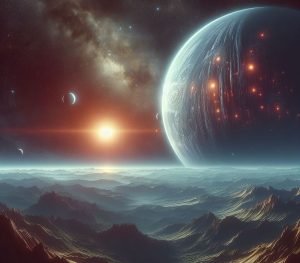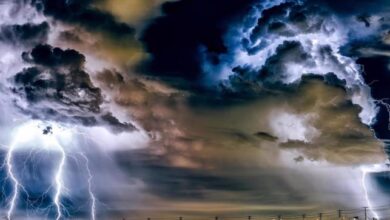Is there life on K2-18 b? What James Webb telescope might know

 You may have heard some buzz about a mysterious exoplanet called K2-18 b. This distant world, located 120 light-years away from Earth, has been the subject of much speculation and excitement in recent years, especially after the launch of the James Webb Space Telescope (JWST) in 2021.
You may have heard some buzz about a mysterious exoplanet called K2-18 b. This distant world, located 120 light-years away from Earth, has been the subject of much speculation and excitement in recent years, especially after the launch of the James Webb Space Telescope (JWST) in 2021.
The JWST is the most powerful space telescope ever built, capable of observing the faint infrared light from distant stars and planets. One of its main goals is to study the atmospheres of exoplanets – planets orbiting other stars – and look for signs of life, such as oxygen, methane, or other organic molecules.
K2-18 b is one of the prime targets for JWST, because it is a rare type of exoplanet known as a “hycean” world. Hycean planets are larger and more massive than Earth, but smaller and less dense than gas giants like Jupiter. They have thick hydrogen-rich atmospheres and deep oceans of liquid water on their surfaces. These conditions could make them ideal habitats for life, even more so than Earth-like planets.
But has JWST already found evidence of life on K2-18 b? That’s what some people believe, based on a cryptic statement made by British astronaut Tim Peake in 2020. In an interview with The Sun, Peake said:
“Potentially, the James Webb telescope may have already found [alien life]… it’s just that they don’t want to release or confirm those results until they can be entirely sure, but we found a planet that seems to be giving off strong signals of biological life.”

Peake did not name the planet he was referring to, but many assumed it was K2-18 b, since it was one of the most promising candidates for life at the time. Peake’s statement sparked a lot of excitement and curiosity among astrobiologists and space enthusiasts, who wondered if he had some insider information or was simply speculating.
However, before you get too excited, you should know that there is no official confirmation or announcement from NASA or ESA (the agencies behind JWST) that they have found life on K2-18 b or any other exoplanet. In fact, JWST has not even observed K2-18 b yet, as it is still undergoing testing and calibration in orbit.
According to Knicole Colon, the deputy project scientist for JWST at NASA’s Goddard Space Flight Center, JWST has not found definitive evidence of life on an exoplanet. She told Ars Technica:
“It is anticipated that JWST observations may lead to the initial identification of potential biosignatures that could make habitability more or less likely for a given exoplanet.”
“Future missions will be needed to conclusively establish the habitability of an exoplanet.”
In other words, JWST will only be able to detect some clues that could indicate the presence or absence of life on an exoplanet, but not prove it conclusively. It will take more observations and analysis from other telescopes and missions to confirm or rule out the existence of alien life.
So what can we expect from JWST when it comes to K2-18 b? Colon said that JWST will observe K2-18 b in 2024, as part of its Early Release Science program. This program will showcase some of the first scientific results from JWST and demonstrate its capabilities to the scientific community and the public.
JWST will use its Near-Infrared Spectrograph (NIRSpec) instrument to measure the spectrum of light coming from K2-18 b as it passes in front of its host star. This will reveal the chemical composition and structure of its atmosphere, and possibly detect some biosignatures.
However, Colon cautioned that detecting biosignatures on K2-18 b will not be easy, because its hydrogen-rich atmosphere makes it harder to see through than Earth-like atmospheres. She said:
“Hydrogen-dominated atmospheres are more challenging to observe with JWST because they are more opaque than atmospheres with lower mean molecular weight (such as Earth’s atmosphere).”
“This means that there are fewer wavelength regions where we can probe deeper into the atmosphere and potentially detect biosignatures.”
She also noted that K2-18 b is not a perfect analog for Earth, because it is much larger and hotter than our planet. It receives about four times more radiation from its star than Earth does from the Sun, which could affect its climate and chemistry.
Therefore, even if JWST detects some biosignatures on K2-18 b, such as oxygen or methane, they may not necessarily indicate life. They could also be produced by non-biological processes, such as photochemistry or volcanism.
Colon said:
“Detecting biosignatures on exoplanets is not a simple yes or no answer. It requires careful interpretation of the data and comparison with models and observations of other planets (including our own).”
“Ultimately, we need to build up a statistical sample of exoplanets with different characteristics and look for trends and outliers that could point to the presence or absence of life.”
So, while K2-18 b remains a fascinating and promising world to explore, we should not jump to conclusions based on rumors or speculation. JWST will soon give us a glimpse into its atmosphere, but it will take more time and effort to determine if it is truly habitable or inhabited.
Until then, we can only wonder and hope that we are not alone in the universe.




